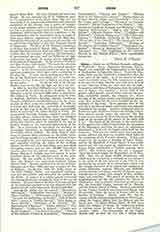

Syene, a titular see in Thebais Secunda, suffragan of Ptolemais. Syene (Egyptian, Souanou, Coptic, Souan), was originally the marketplace of the Island of Elephantine (in Egyptian, Abou). Under the Pharaohs, Abou was the capital of a principality, then the chief town of the nome. It is not known at what epoch its suburb across the Nile commenced to grow at its cost; for a long time the two cities were treated as one, Souanou being the port and city of work. Its quarries, with those of Rohannou, were the principal ones of Egypt; they supplied a certain kind of red granite called syenite, out of which were cut the obelisks, monolithic temples, the colossus, etc. From the time of the ancient empire royal Egyptian envoys went there to look for the stone destined for the sarcophagus of the king. These quarries were in full activity in the Roman epoch, and syenite was exported throughout the empire. Another celebrated place in Syene was a pit, which was incorrectly thought to have been placed exactly under the equator. For this reason it was chosen by Eratosthenes as the starting point of his measure of the surface of the earth (230 s. c.). The Syene of the Romans to the southwest of the present city, suffered much from the incursions of the Blemmyes, and from the pest; its inhabitants abandoned it to live in the higher parts built by the Saracens. This new city which was at first very prosperous suffered also from the troubles which followed the extinction of the Fatimite dynasty. Taken and retaken by the Qenous or Barabra of Lower Nubia, and by the Haouarah of Upper Egypt, it was nearly ruined and did not regain its importance until the Sultan Selim established a Turkish garrison there (1517). The Arabian name of the city is Assouan. There the French fought the Mamelukes, on May 16, 1799. This city of about 10,000 inhabitants, and which may be reached by a railroad, as it is situated to the south of the first cataract of the Nile, is very interesting on account of its picturesque aspect and the strange character of its population composed of Arabs, Barbarins, negroes, Bisharis, and Ababdeh; curious bazaars and quays; remains of Roman quays, inscriptions on rocks, little temple of Isis, Arabian ruins and cemetery. The places of interest in the neighborhood are the old quarries, the Island of Elephantine (today Geziret Assouan), an old necropolis, the beautiful Coptic convent of St. Simeon, and the famous Island of Philae. Syene is mentioned by the Prophet Ezechiel, who threatened Egypt with devastation “from the tower of Syene, even to the borders of Ethiopia” (Ezech., xxix, 10). See St. Jerome and the modern commentators on this passage, where the Vulgate differs from the Hebrew and the
Greek text. Le Quien (Oriens christ., II, 613) mentions two bishops of Syene: St. Ammonius, martyr at Antinoe where he had a church, and Befajm, a Jacobite (1086). The Synaxarion of the Coptic church tells us that the city had a bishop from the time of the Patriarch Timothy, one of the successors of St. Athanasius
S. PETRIDES

